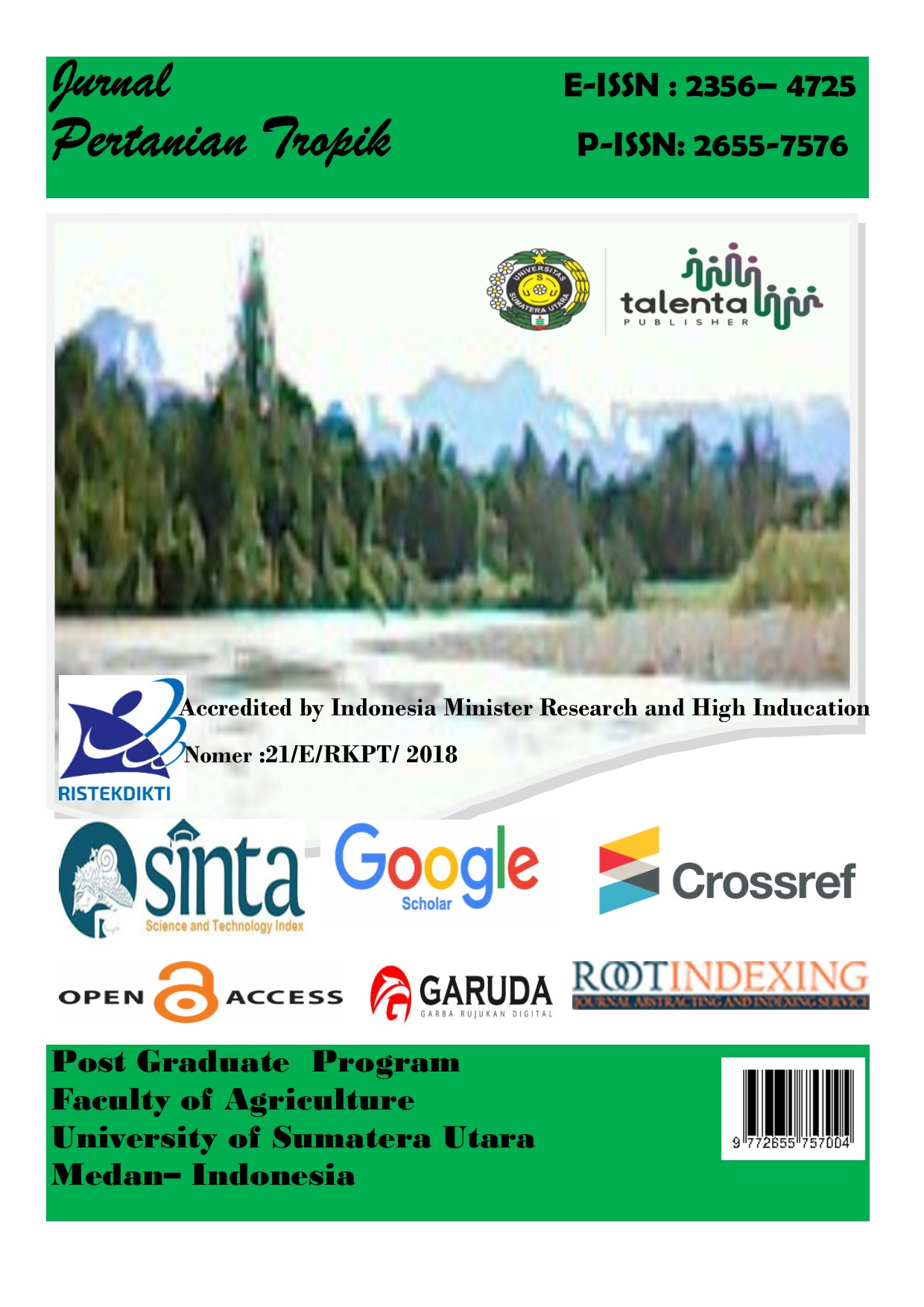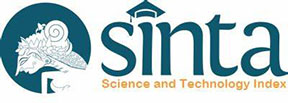Analysis of Pesticide Residues in Chili Local (Capsicum annum) in The Region of Mandailing Natal Regency
DOI:
https://doi.org/10.32734/jopt.v7i2.4363Keywords:
Pestisida, cabai lokal, OrganofosfatAbstract
Abstract
Pesticides are chemicals always applied to various types of plant coomodities. The most widely applied pesticide applications are horticultural crops. The purpose of this study was to determine the organophosphate pesticide residues contained in local chili in Mandailing Natal regency. The research method in the form of a survey conducted on several local chili farmers and traders in the Mandailing Natal area.In this study, 2 main locations of chili cultivation were taken namely in the village of Sibanggor Julu and Tangga bosi. The study was interviewing 5 local chili farmers. The results showed that the local chili which was observes in the two villages contained pesticide residues. Pesticide residues found in the village og Sibanggor Julu exceed the maximum residue limit (BMR), namely Dimethoad 127,7504 mg/kg and chlorpyrifos 0,1513 mg.kg. As for the Tangga bosi  profenofost 7,4302 mg/kg and dimethoad 30,0019 mg/kg.
Â
Â
Â
Downloads
References
Afriani, A., Heviyanti, M. and syawal Harahap, F., 2019. Effectiveness of gliocladium virens in controlling Fusarium oxysporum F. sp. capsici disease on chilli plant. Jurnal Pertanian Tropik, 6(3), pp.403-411.
Ahmed, A., Randhawa, M. A., Yusuf, M. J.,Khalid, N. (2011) Effect of processingon pesticide residues in food crops – AReview, Journal of AgriculturalResearch, 49, 379 – 390.
Chen, C., Qian, Y., Chen, Q., Tao, C., Li, C.,& Li, Y. (2011). Evaluation of pesticideresidues in fruits and vegetables fromXiamen, China. Food Control, 22(7),1114-1120.http://dx.doi.org/10.1016/j.foodcont.2011.01.007.
Djojosumarto, P. 2009. Teknik Aplikasi Pestisida Pertanian. Jakarta : PT. Agromedia Pustaka.
Fadhillah, W. and Harahap, F.S., 2020. Pengaruh Pemberian Solid (Tandan Kosong Kelapa Sawit) Dan Arang Sekam Padi Terhadap Produksi Tanaman Tomat. Jurnal Tanah dan Sumberdaya Lahan, 7(2), pp.299-304.
Fitriadi, B.R. and Putri, A.C., 2016. Metode-Metode Pengurangan Residu Pestisida pada Hasil Pertanian. Jurnal Rekayasa Kimia & Lingkungan, 11(2), pp.61-71.
Hasibuan R. 2015. Insektisida OrganikSintetik dan Biorasional. BandarLampung: Plantaxia. hlm. 8-72.
Indraningsih. 2008. Pengaruh PenggunaanInsektisida Karbamat terhadapKesehatan Ternak dan Produknya.Wartazoa Vol. 18 No. 2 Tahun 2008:
Mutiatikum D, Murad J, Endreswari S. Profil Residu Pestisida Ditiokarbamat Dalam Tomat dan Selada Pada Tingkat Konsumen di DKI Jakarta. Media Litbang Kesehatan 2003; 13(4).
Sumiati, Astri dan Julianto. 2018. Analisa residu pestisida di wilayah Malang dan Penanggulangannya untuk Keamanan pangan Buah Jeruk. Program Studi Agroteknologi, Fakultas Pertanian, Universitas Tribhuwana Tunggadewi. Buana Sains Vol 18 No 2 : 125-130. 2018
Walida, H., Surahman, E., Harahap, F.S. and Mahardika, W.A., 2019. Response of giving local microorganism solutions from bamboo shoot to growth and production of red chili plant (Capsicum annum L) jenggo F1. Jurnal Pertanian Tropik, 6(3), pp.424-429.
Zulkarnain, I., 2010. Aplikasi Pestisida dan Analisa Residu Pestisida Golongan Organofosfat Pada Beras di Kecamatan Potibi Kabupaten Padang Lawas Utara Tahun 2009
Downloads
Published
How to Cite
Issue
Section
License
Copyright (c) 2020 Jurnal Pertanian Tropik

This work is licensed under a Creative Commons Attribution-ShareAlike 4.0 International License.






















